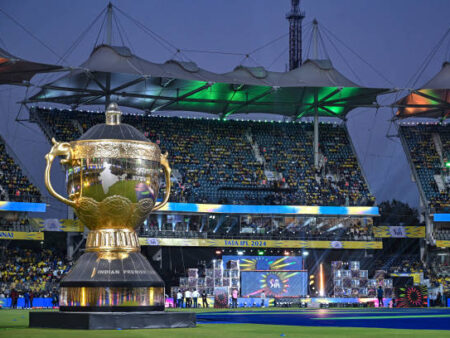The EFL Cup, or the Carabao Cup, is one other cup structure that has long been a proving ground of extraordinary techniques and methods used by teams in English soccer. It may be great for clubs from the Premier League to settle for lower league teams as they see this match as a chance for silverware, and depending on their desires, squad intensity, or position which they find themselves in different competitions, their approaches can be drastically different.
This article also focuses on the strategies that groups use when playing in the EFL Cup including the rotation of players, different attacking tactics, high-pressing methods, and playing counter football. We additionally touch on how managers plan for the last decider: two of those strategies: The penalty shootout approach.
Squad Rotation:
Another method of addressing structural and cultural violence and moving toward a global ethic of sin is through the concept of common politics. The EFL Cup is one of the tournaments in which groups carry out squad rotation as one of the most distinguished techniques. This competition makes it possible for managers, especially from the Premier League aspects, to give some of their top players a break and give the other talented, but less used players a valuable experience. This is due to the intense fixture list throughout the season, especially for teams that are participating in European competitions, and this calls for squad rotation as a way of balancing the players’ fatigue level.
Different club programs can look particularly at lower league teams completion and their squad output. It may contain benching a key superstar rather than playing an academy player to build him up while the team is on the field and is strong enough to ease through the match and possibly progress to the next stage in equal measure. Often, the intensity of a crew’s squad determines how tight the RP rotation is, and for squads with fewer assets, every sport subject, is making full-power lineups more regular.
Attacking Formations And Creativity
Another example of the tactical level divergence is in how we attacking formations used. Many of the top-tier groups within the EFL Cup use the fighters in with formations to either exploit their opponents’ disadvantage or as a rehearsal for a more serious outfit.
The four-3-three structure is widely used as it provides equal weightage towards defensive and attacks with numerous attacking formations while also maintaining control over the midfield. Nevertheless, when in opposition to considerably lower-class groups that prefer to maintain a compact backline, closely packed in their box, PHP elite managers might turn to formations, that fill up the competitive box, including the 3-4-3 or the 3-5-2. These structures allow fullbacks to advance even further up the field while overloading the wings and dragging defenders out of position.
Conversely, most of the lower league teams employ additional conventional strategies for example, the four-4-2 or five-three-2, with emphasis on the defensive strategy. Such groups often surface to contain the creativity of the competitor, even as aspiring to benefit from extraordinary opportunities throughout the counterattacks.
Stereotyping Behavioral Strategies In The EFL Cup
High-pressing tactics are usually observed with the top-tier teams within the EFL Cup especially when they are facing teams from lower tiers. This was made famous by managers such as jürgen Klopp and Pep Guardiola, whereby they pressed high up the pitch in an attempt to ensure the opponent made mistakes or applied pressure high up the pitch, especially in areas around the opponent’s attacking players.
To the lower-league team, high-urgent methods may be a two-edged sword. Despite the ability to function more like professional competition gamers, it also requires an amazing deal of power and strategic control. He used the example that managers of different golf equipment often choose to remain compact in defense instead of spreading his crew, which may leave him vulnerable to a counterattack by other technically superior teams.
Teams employing high-pressing tactics often target to activate the clicking while the opponent is in the process of trying to play from the back, targeting the fullback players and players in a similar role in an attempt to disrupt the buildup play.
Counter-Attacking Football: An economic activity Is tied To A Risk and Reward Game
Counter-attacking football is considered one of the preferred strategies in the decreased–league teams contained in the EFL Cup, especially while constructing from an opposing extreme element. The concept is easy to percolate low, to digest force, and to strike fast and clean punches when the opportunity presents itself.
Counter-attacking football is tactics that involve rushing forward in the search of goals and these teams aim at the tempo of their forward line and look to maximize the space left through the competition’s attacking shapes. Standing in numbers and maintaining a packed formation is crucial for this strategy, as the aim is to force the opponent to overextend himself way before one gets to unleash fast attacks on him.
Other sides of the Premier League additionally occasionally practice counter-attacking Football in the EFL Cup when they’re playing with their reserves or away against unfriendly opposition. It brings them to shield some energy while in the same time keeping up a continual striking hazard toward the break.
Lower-league teams’ Attitude Towards The EFL Cup
For the groups belonging to lower leagues of English football, EFL Cup is largely one of the few opportunities to challenge the teams of the Premier League, that is why it is considered to be important and significant cup competition. The method for such clubs mainly boils down to putting to bed compact defending and striking at the ruin or profiting from set-pieces.
As a result of the technical difference, decrease-league groups emphasis on protecting company by utilizing formations whose key focus is on solidity. Sometimes the back 5 with 3 important defenders offers the necessary defensive shield against improved groups, therefore one can use it. However, when one appears, those groups will surge forward en masse with the intention of catching the opposition off defend during the duration of a transition.
They also become set-portions that also proves to be important in the arsenal of these groups, where free-kick and corner exercises are well-drilled to capitalize on any weakness in the opposition’s defense.
Penalty Shootout Strategy
In most cases, when the fit ends in a draw even after extra and further time the EFL Cup movements straight to penalty shootout strategy. This is the area where the managers must ensure they have the proper penalty shootout strategy firm in place. This is the reason why teams hold on practice specialing in participant psychology to make sure that the designated penalty takers have being practicing constantly, and also to make sure that an oppositional goalkeeper understands the inclinations of the gamers.



